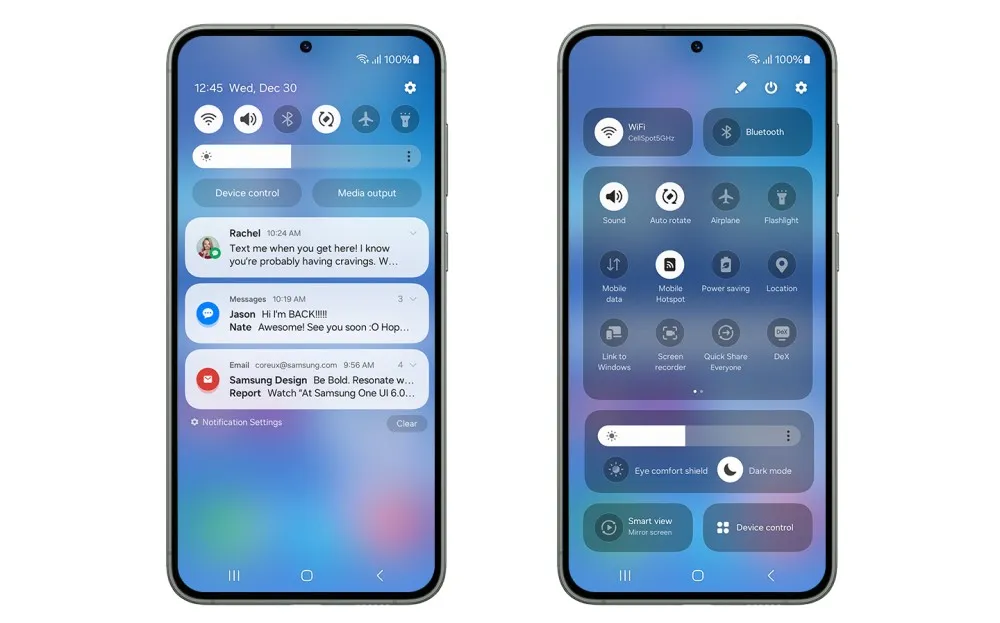When it comes to processor technology, the battle lines between AMD and Intel have always been distinctly drawn. Both tech giants are in a constant scramble to outdo each other, and the upcoming AMD Ryzen 8000 series and Intel’s future CPUs—particularly the Arrow Lake-H/HX and Lunar Lake-M—indicate that the race is nowhere near slowing down. Leaks and revelations about these future chipsets provide a peek into what might be the next big things in the laptop CPU arena.
AMD Steps Up with Ryzen 8000 Series
AMD’s progression in the CPU landscape has been remarkable, and the expected arrival of the Ryzen 8000 series (codenamed Strix Point) in 2024 heralds the next chapter in their evolution. While details about clock speeds, core counts, and TDP are still under wraps, the Ryzen 8000 series is anticipated to be based on the 3nm Zen 5 architecture. This leap forwards could potentially deliver significant improvements in performance and energy efficiency compared to its predecessors.
Developers and gaming enthusiasts are eagerly awaiting more details about the Ryzen 8000 series, as it promises to uphold AMD's legacy of providing robust performance for various computing needs.

| CPU FAMILY NAME | AMD KRACKAN POINT | AMD FIRE RANGE | AMD STRIX POINT HALO | AMD STRIX POINT | AMD HAWK POINT | AMD DRAGON RANGE | AMD PHOENIX | AMD REMBRANDT | AMD CEZANNE | AMD RENOIR | AMD PICASSO | AMD RAVEN RIDGE |
|---|---|---|---|---|---|---|---|---|---|---|---|---|
| Family Branding | AMD Ryzen 9040 (H/U-Series) | AMD Ryzen 8055 (HX-Series) | AMD Ryzen 8050 (H-Series) | AMD Ryzen 8050 (H/U-Series) | AMD Ryzen 8040 (H/U-Series) | AMD Ryzen 7045 (HX-Series) | AMD Ryzen 7040 (H/U-Series) | AMD Ryzen 6000 AMD Ryzen 7035 | AMD Ryzen 5000 (H/U-Series) | AMD Ryzen 4000 (H/U-Series) | AMD Ryzen 3000 (H/U-Series) | AMD Ryzen 2000 (H/U-Series) |
| Process Node | 4nm | 5nm | 4nm | 4nm | 4nm | 5nm | 4nm | 6nm | 7nm | 7nm | 12nm | 14nm |
| CPU Core Architecture | Zen 5 | Zen 5D | Zen 5C | Zen 5D + Zen 5C | Zen 4 | Zen 4 | Zen 4 | Zen 3+ | Zen 3 | Zen 2 | Zen + | Zen 1 |
| CPU Cores/Threads (Max) | TBD | 16/32 | 16/32 | 12/24 | 8/16 | 16/32 | 8/16 | 8/16 | 8/16 | 8/16 | 4/8 | 4/8 |
| L2 Cache (Max) | TBD | TBD | TBD | TBD | 4 MB | 16 MB | 4 MB | 4 MB | 4 MB | 4 MB | 2 MB | 2 MB |
| L3 Cache (Max) | TBD | TBD | 64 MB | 32 MB | 16 MB | 32 MB | 16 MB | 16 MB | 16 MB | 8 MB | 4 MB | 4 MB |
| Max CPU Clocks | TBD | TBD | TBD | TBD | TBD | 5.4 GHz | 5.2 GHz | 5.0 GHz (Ryzen 9 6980HX) | 4.80 GHz (Ryzen 9 5980HX) | 4.3 GHz (Ryzen 9 4900HS) | 4.0 GHz (Ryzen 7 3750H) | 3.8 GHz (Ryzen 7 2800H) |
| GPU Core Architecture | TBD | RDNA 3+ 4nm iGPU | RDNA 3+ 4nm iGPU | RDNA 3+ 4nm iGPU | RDNA 3 4nm iGPU | RDNA 2 6nm iGPU | RDNA 3 4nm iGPU | RDNA 2 6nm iGPU | Vega Enhanced 7nm | Vega Enhanced 7nm | Vega 14nm | Vega 14nm |
| Max GPU Cores | TBD | 2 CUs (128 cores) | 40 CUs (2560 Cores) | 16 CUs (1024 Cores) | 12 CUs (786 cores) | 2 CUs (128 cores) | 12 CUs (786 cores) | 12 CUs (786 cores) | 8 CUs (512 cores) | 8 CUs (512 cores) | 10 CUs (640 Cores) | 11 CUs (704 cores) |
| Max GPU Clocks | TBD | TBD | TBD | TBD | TBD | 2200 MHz | 2800 MHz | 2400 MHz | 2100 MHz | 1750 MHz | 1400 MHz | 1300 MHz |
| TDP (cTDP Down/Up) | 15W-45W (65W cTDP) | 55W-75W (65W cTDP) | 25-1250W | 15W-45W (65W cTDP) | 15W-45W (65W cTDP) | 55W-75W (65W cTDP) | 15W-45W (65W cTDP) | 15W-55W (65W cTDP) | 15W -54W(54W cTDP) | 15W-45W (65W cTDP) | 12-35W (35W cTDP) | 35W-45W (65W cTDP) |
| Launch | 2025? | 2H 2024? | 2H 2024? | 2H 2024? | Q1 2024? | Q1 2023 | Q2 2023 | Q1 2022 | Q1 2021 | Q2 2020 | Q1 2019 | Q4 2018 |
Intel Fights Back with Arrow Lake and Lunar Lake
Not to be outdone, Intel is gearing up to counter with its own set of innovations. The Intel Arrow Lake-H/HX CPUs, expected to drop in the 2024 timeframe, signal Intel's efforts to sustain their competitive edge in the high-performance computing market. Although the nitty-gritty specifications remain elusive, it’s apparent that Intel is focusing on enhancing multi-thread performance and graphical capabilities with these chips.
Looking further ahead, Intel's Lunar Lake-M, anticipated in 2025, showcases the company's commitment to pushing the boundaries of mobile computing. Although specific details about this chipset are sparse, the innovation is expected to continue Intel’s pursuit of superior performance and energy efficiency in the laptop domain.

| CPU FAMILY | LUNAR LAKE | ARROW LAKE | METEOR LAKE | RAPTOR LAKE | ALDER LAKE |
|---|---|---|---|---|---|
| Process Node (CPU Tile) | Intel 20A? | Intel 20A '5nm EUV" | Intel 4 '7nm EUV' | Intel 7 '10nm ESF' | Intel 7 '10nm ESF' |
| Process Node (GPU Tile) | TSMC 3nm? | TSMC 3nm | TSMC 5nm | Intel 7 '10nm ESF' | Intel 7 '10nm ESF' |
| CPU Architecture | Hybrid | Hybrid (Four-Core) | Hybrid (Triple-Core) | Hybrid (Dual-Core) | Hybrid (Dual-Core) |
| P-Core Architecture | Lion Cove? | Lion Cove | Redwood Cove | Raptor Cove | Golden Cove |
| E-Core Architecture | Skymont? | Skymont | Crestmont | Gracemont | Gracemont |
| LP E-Core Architecture (SOC) | Skymont? | Crestmont? | Crestmont? | N/A | N/A |
| Top Configuration | TBD | TBD | 6+8 (H-Series) | 6+8 (H-Series) 8+16 (HX-Series) | 6+8 (H-Series) 8+8 (HX-Series) |
| Max Cores / Threads | TBD | TBD | 14/20 | 14/20 | 14/20 |
| Planned Lineup | U Series? | H/P/U Series | H/P/U Series | H/P/U Series | H/P/U Series |
| GPU Architecture | Xe2-LPG (Battlemage) | Xe-LPG (Alchemist) | Xe-LPG (Alchemist) | Iris Xe (Gen 12) | Iris Xe (Gen 12) |
| GPU Execution Units | 64 EUs | 192 EUs | 128 EUs (1024 Cores) | 96 EUs (768 Cores) | 96 EUs (768 Cores) |
| Memory Support | TBD | TBD | DDR5-5600 LPDDR5-7400 LPDDR5X - 7400+ | DDR5-5200 LPDDR5-5200 LPDDR5-6400 | DDR5-4800 LPDDR5-5200 LPDDR5X-4267 |
| Memory Capacity (Max) | TBD | TBD | 96 GB | 64 GB | 64 GB |
| Thunderbolt 4 Ports | TBD | TBD | 4 | 4 | 4 |
| WiFi Capability | TBD | TBD | WiFi 6E | WiFi 6E | WiFi 6E |
| TDP | TBD | TBD | 7W-45W | 15-55W | 15-55W |
| Launch | ~2025 | 2H 2024 | 2H 2023 | 1H 2023 | 1H 2022 |
What This Means for Consumers and the Tech Industry
The coming years in the CPU industry are poised to be incredibly exciting with these impending releases. AMD and Intel, through their upcoming offerings, are not only striving to outshine each other but are also aiming to redefine what users can expect from laptop performance.
For consumers, this signifies not just an improvement in raw computing capabilities, but also potential enhancements in areas like gaming, content creation, and multitasking. As these processors adopt more advanced architectures, users can anticipate laptops that deliver more power, longer battery life, and superior performance across various applications and uses.
The pricing details for these future processors are still undisclosed, leaving tech enthusiasts and experts speculating about the cost versus performance ratio these chips will bring to the table. However, if history is any indication, both AMD and Intel will likely aim to balance premium performance with competitive pricing to capture the attention and wallets of consumers.
As more details unfold, it will be fascinating to see how the rivalry between AMD and Intel shapes the future of processor technology and, by extension, the devices that become integral to our digital lives.
Sources: wccftech.com



